Dr. rer. nat. Benjamin Walter
- Assistant Professor/Research fellow
- Room: 152
CS 50.40 - Phone: +49 721 608-42717
- b walter ∂does-not-exist.kit edu
Institut für Angewandte Geowissenschaften
Professur für Geochemie und LagerstättenkundeKIT - Karlsruher Institut für Technologie
Campus SüdAdenauerring 20b, Gebäude 50.40
76131 Karlsruhe
Present projects
I am interested in all kind of fluids responsible for ore-formation in magmatic, metamorphic, sedimentary and hydrothermal settings. My major research focus is to decipher processes leading to ore formation in carbonatites, alkaline-rocks and hydrothermal vein-type deposits. My current projects are:
Alkaline silicate rocks and carbonatites
- The influence of crustal contamination on a late-stage REE-mineralization in carbonatites (collaboration with Gregor Markl, Michael Marks, Johannes Giebel, Tübingen)
- The role of late-stage fluids in carbonatite and alkaline silicate rocks (collaboration with Gregor Markl, Michael Marks, Johannes Giebel, Tübingen)
- The mineralogical control of geophysical exploration signatures (HiTech AlkCarb project)
- New geomodels for exploring carbonatites and alkaline silicate rocks (HiTech AlkCarb project)
- The genesis of the South African and Namibian alkaline provinces province (collaboration with Gregor Markl, Michael Marks, Johannes Giebel, Tübingen)
- Reconstruction of hydrothermal system in volcanoes of the East African rift (collaboration with Will Hutchinson, St Andrews, Scotland)
- Petrology and age-constrains of the SW-German alkaline province (collaboration with Gregor Markl and Michael Marks, Tübingen; Jens Grimmer KIT)
- Shallow plumbing systems in alkaline and carbonatite complexes (HiTech AlkCarb project)
Hydrothermal vein type deposits
- Trace element systematics of hematite-hosted fluid inclusions (cooperation with Gregor Markl, Michel Marks, Tübingen and Matthew Steele-MacInnis, Edmonton, Canada)
- Mineralogical changes within a single vein and the relation to superregional events
- Deciphering fluid migration pathways (cooperation with Mathias Burisch, Freiberg)
- The geochemistry of native arsenic and arsenides in hydrothermal vein-type deposits (cooperation with Gregor Markl and Manuel Scharrer, Tübingen)
- The genesis of ore shoots in hydrothermal veins (cooperation with Gregor Markl and Manuel Scharrer, Tübingen)
- Kinetics of ore precipitation in hydrothermal systems
Other projects I contribute:
- Dolomitization in oil reservoirs (cooperation with Adrian Immenhauser and Anton Kolchugin, Kazan, Russia)
- How to bring hydrocarbons into crystalline basement rocks? (cooperation with Graham Banks, GEUS Copenhagen)
- Testing the resilience of ancient early diagenetic dolomites as archives of their palaeo-environment (cooperation with Adrian Immenhauser and Mathias Müller, Bochum)
Funded projects
DFG single projects:
WA 3116/16-1 Towards an improved understanding of open- versus closed-system diagenesis in carbonate research
Carbonate-archive data record, at the time of their deposition, a brief snapshot of the ambient Earth’s surface conditions. All carbonate archives are susceptible to post-depositional alteration. The challenge is to separate a meaningful environmental signal from one that is modified by later diagenetic or metamorphic alteration, and hence to reliably assess the integrity and robustness of the extracted proxy data as indicators of their paleo-environment. In the context of early- to late-diagenetic pathways, carbonate phases may undergo rock-buffered (=preserving environmental signals) or fluid-buffered (overprinting environmental signals) diagenesis. In many cases, the difficulty lies in recognizing fluid- versus rock-buffered diagenesis, particularly in the definition of generally applicable criteria to separate these fundamentally different environments and in cases where fluid-buffered alteration is later overprinted under rock-buffered conditions. Additional complexity arises from the observation that a carbonate rock may display fluid-buffered behavior for one element (i.e., oxygen) and rock-buffered behavior for another (i.e., carbon, magnesium, calcium, or strontium).
This project will investigate if the combination of petrographic and geochemical analysis with microthermometrical data derived from fluid inclusions can serve as a fingerprint for either of the two (fluid- versus rock-buffered) alteration modes. The study will be performed in the Steltenberg quarry in the northern Rhenish Massif in western Germany, where a complex set of Devonian carbonates that has undergone burial- and meteoric diagenesis will be investigated as a litmus test for the above considerations. This Devonian `natural laboratory’ is ideal in the sense that it allows comparing fundamentally different types of diagenetic and tectonic overprint of fluid-buffered and overprinted rocks, and such that seem to evidence rock-buffered diagenesis and preserved environmental data.
To test our hypothesis, we will build on a detailed preliminary petrographic assessment to reconstruct fluid paleo-temperatures and fluid chemistry using carbon and oxygen isotope values, radiogenic strontium, calcium, and magnesium isotope values, and microthermometry, and place these data into a stratigraphic/temporal context employing U-Pb carbonate dating. This work will allow us to place all this petrographical and geochemical data in a fluid property context and to establish criteria for diagenesis for the open (fluid-buffered) and the closed (rock-buffered) system end-members and their corresponding intermediate stages.
WA 3116/14-1 Mechanism of Paleoproterozoic hydrothermal Zn-Pb-Ag-rare metals mineralization in the Black Angel district, central West Greenland
In this project, we intend to investigate the mineralogy, geochemistry and structures of Paleoproterozoic Zn-Pb-Ag-rare metals ores in the Black Angel District of central West Greenland. Black Angel represents one of the oldest carbonate-hosted Pb-Zn deposits on Earth, having produced 11.2 Mt Zn-Pb-Ag ore between 1973 and 1990. In a preliminary study, we were able to identify the Ge-mineral briartite, which is only known from 11 other deposits worldwide. Our preliminary data indicate that the formation of briartite is controlled by deformation of the ore and redistribution of Ge.
In this project, we aim at investigating the absolute age, processes of hydrothermal mineralization and the distribution of important trace elements (e.g., Cd, Ge, Ga, In) in the orebodies related to different structural features of the ore. The data will provide important constraints on (1) the temperature, pH and redox-state during hydrothermal mineralization, and (2) the potential source for metals and hydrothermal fluid. The aim of the project is to develop a detailed model of the evolution of hydrothermal mineralization from the source of fluids and metals to the site of metal precipitation. We expect important results from trace element combined with microstructural analysis of sulfides with respect to deformation- and fluid- controlled element distribution.
WA 3116/15-1 Magma evolution in space and time along the Kuboos-Bremen Line in Namibia
The genesis of carbonatites is typically explained by a combination of factors, including low-degree partial melting of an enriched mantle source, crystal fractionation and carbonate-silicate liquid immiscibility. Previous work by the applicants indicate that carbonatite magmas can be significantly modified by crustal contamination. The relation between emplacement depth, multiple reuse of pathways and carbonatite generation was, however, given only limited attention. In an ideal case study, we would investigate spatially related intrusions covering broad range of igneous silicate rocks and carbonatites. In such an ideal natural laboratory we could study the effect of emplacement depth-related variations and the multiple reuse of pathways which can be evaluated against crustal contamination in a carbonatitic-alkaline igneous province. Such an ideal system with an excellent outcrop situation can be found at the Namibian- South African border at the Kuboos-Bremen Line (KBL). The Kuboos-Bremen-Line complexes show highly variable rock associations, some of them include carbonatites. Two important observations lead to research questions of scientific and economic significance: 1) While the carbonatites of the Marinkas Quellen complex are strongly enriched in HFSE, the eastern carbonatites are barren. 2) Many of the silicate rocks associated with the carbonatites are granites and syenites, but their genetic relations towards each other are not clear. The proposed study will therefore investigate the genetic relationships between granites, quartz syenites, syenites, foid syenites and carbonatites and will be guided by the following hypotheses:
- The behaviour of HFSE and REE in carbonatitic magmas is influenced by source contamination and silicate wall-rock interaction.
- The crosscutting relationships of the individual complexes and available age data suggest progressive evolution of the province from SW to NE evolving from granitic to foid-syenitic/carbonatitic compositions with time and location.
- The rock associations represent two magma suites derived from variable sources that used the same zone of weakness for ascent and emplacement.
To test these alternative scenarios, textural, mineral chemical, isotopic and geochronological data will be gathered and compared for the representative intrusions of the Kuboos-Bremen Line. The expected results will allow to characterize the magmatic to hydrothermal evolution of the whole system in great detail and to reconstruct the genesis of carbonatites in alkaline silicate dominated igneous provinces.
MA 2563/19-1 Petrology and age of foidites in SW Germany
Foidites are mantle-derived and strongly SiO2-undersaturated volcanic rocks, with primitive olivine melilitites possibly representing primary magma compositions. Among the Palaeogene volcanic rocks in SW Germany, foidite occurrences are concentrated in seven areas (Kaiserstuhl, Upper Rhine graben, Bonndorf graben including Vosges, Hegau, Urach, Lower Neckar). Mineralogically, they range between olivine melilitites, nephelinites and haüynites, with clear differences between those areas. However, except for the Kaiserstuhl, their petrology has not been systematically investigated and their ages are not reliably constrained.
The proposed study will test the following hypotheses: (i) Mineralogical differences of the melilitite-nephelinite-haüynite series at the locations to be investigated relate to variable degrees and courses of magmatic differentiation of parental olivine melilititic magmas. (ii) The intrusion ages for these rocks relate to transient geodynamic settings that cause distinct melting events in the mantle manifested in distinct ages for the different areas to be studied.
To test these hypotheses, detailed petrographic and mineral chemical data (EMPA and LA-ICP-MS on minerals) will be combined with petrological modeling (T-aSiO2-fO2 conditions and differentiation paths) and geochronological data (LA-ICP-MS dating). The expected results will enable us to characterize the crystallization conditions and differentiation paths for the foidites at the different localities. Their comparison with each other will help to decipher potential genetic relations between the foidite types of each locality and will show if the courses of differentiation at the different localities are similar or different from each other. Such a comparative study has never been performed so far and the results are expected to have major implications on our understanding on the potential heterogeneity of the mantle domains below SW Germany. The results of this study will be integrated in recent models on the post-Variscan tectonic evolution in SW Germany.
WA 3116/4-1 Effect and significance of contamination-related compositional melt variations of the Tweerivier and Bulhoekkop carbonatites, South Africa, with special reference to their REE mineralization
REE enrichment in carbonatitic melts are generally explained by a combination of parameters, including low-degree melting of geochemically enriched mantle sources, carbonate-silicate melt immiscibility, crystal fractionation, melt-aqueous brine immiscibility and hydrothermal alteration. However, the effect of crustal contamination, as a potential first order process is only weakly constrained. Nevertheless, our recent study of Kaiserstuhl carbonatites clearly provided evidence that the interaction of carbonatite magma with silicate wall rocks can enable strong REE enrichment in apatite via the britholite substitution mechanism involving Si. Based on the results from the Kaiserstuhl, the role of variable contaminants needs to be tested in detail to show if this process is of general importance in carbonatitic systems.
This project will investigate the impact of carbonatite-country rock interaction on REE enrichment in carbonatites. The study will be performed using field examples from the Tweerivier and Bulhoekkop carbonatites in the Republic of South Africa which are known to bear a large variability of crustal xenoliths and xenoliths of associated silicate rocks and contain variable amounts of silicate minerals (amphibole, clinopyroxene, mica, tremolite) that may indicate crustal contamination.
To test this hypothesis, whole rock data (XRF and ICP-MS), textural, mineral chemical and isotopic data (microscopy, EMPA, C and O-isotope systematics) will be carried out for the different carbonatites samples to study the effect of contamination by Fe, Mg, Al and Si-rich lithologies. The expected results will allow for (1) Identification of the influence of contamination on the REE pattern of the residual melt. (2) Identification of mineralogical and compositional variation of major mineral phases.
MA 2135/26-1 Influence of crustal contamination on REE-enrichment in carbonatites of the Kalkfeld group (Namibia)
High levels of REE in carbonatites are generally explained by a combination of factors, including low-degree melting of geochemically enriched mantle sources, crystal fractionation, carbonate-silicate melt immiscibility, melt-aqueous brine immiscibility and hydrothermal alteration. Crustal contamination, however, is a process that is typically not considered to play an important role during carbonatite magmatism. Nevertheless, a recent study of the applicants demonstrated that the interaction of carbonatite magma with silicate wall rocks can enable strong REE enrichment in apatite via a coupled substitution mechanism involving Si. Having shown this for the Kaiserstuhl, the applicants suggest that such processes may be of general importance in carbonatitic systems.
This project will investigate the impact of carbonatite-wall rock interaction on REE enrichment in carbonatites. The study will be performed using field examples from the Damaraland Province (Namibia), because these carbonatites show variable REE enrichment and REE mineralogy and contain variable amounts of silicate minerals (amphibole, clinopyroxene, quartz, feldspar) that may indicate crustal contamination.
To test this hypothesis, textural, mineral chemical and geochronological data (microscopy, EMPA, LA-ICP-MS) as well as fluid inclusion data (microthermometry including numerical liquidus-surface modeling for quantification, Raman spectroscopy) for the different carbonatites which are probably genetic related will be gathered and compared with each other. The expected results will allow for (1) characterizing the magmatic to hydrothermal evolution of the carbonatites in great detail and (2) reconstructing the genesis of the REE mineralizations including the potential influence of wall-rock interaction and hydrothermal overprint.
DFG priority programme DOME Dynamics of Ore Metal Enrichment:
MA 2563/18-1 The role of early cumulate formation for HFSE enrichment in foidolitic systems.
Foidolites are mantle-derived and strongly SiO2-undersaturated plutonic cumulate rocks. Studies on economically interesting HFSE deposits associated with foidolitic rocks are generally rare, but the Gardiner Complex in E-Greenland and the Kovdor Complex in Russia were studied in some detail. The various lithologies of both complexes are believed to derive from a mela-nephelinitic parental magma. In both complexes a suite of peridotitic rocks (dunite & clinopyroxenite), melteigitic to urtitic rocks, foidolitic rocks (melilitolite) and carbonatite occur. Although the parental magma compositions are melanephelinitic for the Kovdor and Gardiner complexes, the mineralogical composition of melilitolite and carbonatite of these two complexes show clear differences: Melilitolite of the Gardiner Complex shows ore grade enrichment of perovskite in cumulates, whereas melilitolite at Kovdor contains only accessory perovskite. In contrast, Kovdor carbonatite is HFSE-mineralized, but at Gardiner these rocks are barren in HFSE. This project aims at comparing these two similar complexes in detail and to decipher the processes leading to the HFSE-enrichment in early cumulates at Gardiner and the late-stage HFSE-enrichment in the Kovdor carbonatite.
The proposed study will be guided by the following two working hypotheses: (i) the mineralogical differences between the peridotitic rocks (minor chromite versus minor Ti-magnetite) and melilitolite (presence or absence of massive perovskite cumulates) at the Gardiner and Kovdor complexes relate to differences in their parental magma composition, which influenced the timing of perovskite saturation; (ii) the concentration of HFSE in carbonatite of Gardiner (low) and Kovdor (enriched) relate to the intensity of previous perovskite fractionation. To test these hypotheses, detailed petrographic, mineral chemical and petrological data for the different rock types of the two complexes will be gathered and thoroughly compared. Special focus will be given to the distribution of REE + HFSE (Zr, Hf, Nb, Ta) between apatite, clinopyroxene, olivine, perovskite, and melilitite. The project further aims at developing exploration indicators that will help to search for the different enrichment types within a complex (early cumulate versus late stage magmatic versus hydrothermal overprint).
Past projects
Petrology of the Kaiserstuhl
- Fluid evolution of continental basement brines by microthermometry and crush leach analyses
- Ore forming processes in hydrothermal vein-type deposits, Schwarzwald, Germany
- Stable isotope chemistry of hydrothermal vein-type deposits
- Mg-isotope systematics of hydrothermal carbonates (cooperation with A. Immenhauser, RUB Bochum, Germany)
- Ore petrography and ore chemistry of hydrothermal vein-type deposits
- Ore fluid evolution in the continental crystalline basement
- Ore precipitation processes by LA-ICPMS analyses of single fluid inclusions (cooperation with C. Heinrich & M. Wälle ETH Zürich, Switzerland)
- U-Pb age-dating of hydrothermal gangue and ore minerals (cooperation with A. Gerdes, Frankfurt, Germany)
- Evolution of fluid pathways in crystalline basement (cooperation with C. Heinrich & M. Wälle ETH Zürich, Switzerland)
- Multi-aquifer fluid mixing processes as first order processes for ore precipitation
Teaching
| Lv-No. | Title | SWS |
| 6310036 | Umweltanalytik | 1 |
| 6310037 | Umweltanalytik (Übung) | 4 |
| 6310124 | Wirtschaftlichkeitsabschätzung von Rohstoffprojekten (Reserve Modeling - Feasibility Study of Mining Projects) | 1 |
| 6310570 | Mineralische Rohstoffe | 2 |
| 6321410 | Geochemische Analytik | 2 |
| 6310124 | Industrial Minerals | 2 |
| 6339099 | Metallische mineralische Rohstoffe (Ore-forming processes) | 3 |
Fluid Inclusion short course
This 1 SWS short course provides basic knowledge in microthermometrical analyses and data interpretation.
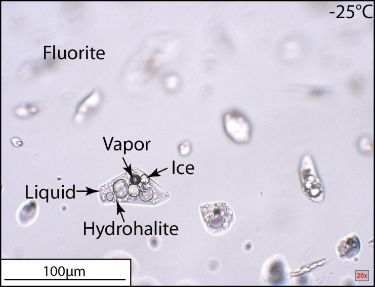 |
Field Trip: Hydrothermal ore forming processes, Schwarzwald
This 3 day field trip provides basic knowledge in mapping ore mineralizations in the field, relationship of host rock and hydrothermal veins and ore forming processes.
Field Trip: Isle of Mull, Scotland (2018)
Mapping Course Elba, Italy
.jpg) |
Mapping Course Syros/Naxos, Greece
Personal information
Dipl. Mineraloge, Postdoc, supervisor of the microthermometry and cathodoluminescence microscopy labs
2006-2012 Diploma in Geoscience, Eberhard Karls University, Tuebingen
2012-2016 Ph.D in Mineralogy, Eberhard Karls University, Tübingen
Ph.D. thesis: Ore forming processes in hydrothermal vein-type deposits, Schwarzwald, Germany
5/2016 Postdoc, Eberhard Karls University, Tübingen (HiTech AlkCarb project)
The HiTech AlkCarb project is funded under the European Union's Horizon 2020 Research and Innovation programme, to develop new geomodels and sustainable exploration methods for alkaline igneous rocks and carbonatites (http://www.bgs.ac.uk/HiTechAlkCarb/). I was project partner in the EKUT team and we work in the Kaiserstuhl SW Germany on science question 1 in work package 2: „How can we predict what intrusive rocks are present at depth using volcanic carbonatites and alkaline rocks exposed at the surface?“
Since 05/2019 Assistant Professor and Research Fellow, Karlsruhe Institute of Technology (KIT)
Publications
Walter, B. F.; Scharrer, M.; Giebel, R. J.; Beranoaguirre, A.; Arthuzzi, J. C. L.; Kemmler, L.; Ladisic, A.; Dück, S.; Marks, M.; Markl, G.
2025. Geochemistry, 85 (1), 126244. doi:10.1016/j.chemer.2024.126244
Reinhard, F.; Walter, B. F.; Giebel, R. J.; Zeh, A.; Marks, M. A. W.; Markl, G.
2025. Lithos, 518-519, 108317. doi:10.1016/j.lithos.2025.108317
Rddad, L.; Cherai, M.; Walter, B. F.; Talbi, F.
2025. Journal of Geochemical Exploration, 275, 107766. doi:10.1016/j.gexplo.2025.107766
Raza, M.; Giebel, R. J.; Staude, S.; Beranoaguirre, A.; Kolb, J.; Markl, G.; Walter, B. F.
2025. Geochemistry, 85 (1), 126249. doi:10.1016/j.chemer.2025.126249
Ladisic, A.; Marks, M. A. W.; Walter, B. F.; Giebel, R. J.; Beranoaguirre, A.; Markl, G.
2025. Geochemistry, 85 (3), 126287. doi:10.1016/j.chemer.2025.126287
Jungmann, M.; Walter, B. F.; Eiche, E.; Giebel, R. J.; Kolb, J.
2025. Journal of Geochemical Exploration, 270, 107641. doi:10.1016/j.gexplo.2024.107641
Araujo Silva, A. de; Hector, S.; Patten, C.; Beranoaguirre, A.; Eiche, E.; Walter, B. F.; Kolb, J.
2025. Mineralium Deposita. doi:10.1007/s00126-025-01380-w
Andrić-Tomašević, N.; Walter, B. F.; Simić, V.; Raza, M.; Životić, D.; Novković, Ž.; Kolb, J.; Gerdes, A.; Beranoaguirre, A.
2025. The Depositional Record, 11 (4), 1029–1062. doi:10.1002/dep2.70017
Walter, B. F.; Giebel, R. J.; Arthuzzi, J. C. L.; Kemmler, L.; Kolb, J.
2024. Journal of African Earth Sciences, 210, Article no: 105154. doi:10.1016/j.jafrearsci.2023.105154
Rddad, L.; Cherai, M.; Walter, B. F.; Talbi, F.; Kraemer, D.; Billström, K.
2024. Geochemistry, 84 (3), 126162. doi:10.1016/j.chemer.2024.126162
Neuweiler, F.; Mueller, M.; Walter, B. F.; Landing, E.; Beranoaguirre, A.; Sendino, C.; Amati, L.; Kershaw, S.
2024. Scientific Reports, 14 (1), Art.-Nr.: 31537. doi:10.1038/s41598-024-83359-7
Mueller, M.; Walter, B. F.; Giebel, R. J.; Beranoaguirre, A.; Swart, P. K.; Lu, C.; Riechelmann, S.; Immenhauser, A.
2024. Geochimica et Cosmochimica Acta, 376, 68–99. doi:10.1016/j.gca.2024.04.029
Kluge, T.; Eiche, E.; Walter, B.; Kramar, U.; Göttlicher, J.; Gudelius, D.; Giebel, J.; Kolb, J.
2024. Mineralium Deposita. doi:10.1007/s00126-024-01314-y
Kasay, G. M.; Borst, A. M.; Giebel, J. R.; Bolarinwa, A. T.; Beranoaguirre, A.; Kluge, T.; Aromolaran, O. K.; Raza, M.; Eiche, E.; Kolb, J.; Nzolang, C.; Walter, B. F.
2024. Precambrian Research, 408, Art.-Nr.: 107421. doi:10.1016/j.precamres.2024.107421
Binder, T.; Marks, M. A. W.; Friedrichsen, B.-E.; Walter, B. F.; Wenzel, T.; Markl, G.
2024. Lithos, 472-473, Art.-Nr.: 107565. doi:10.1016/j.lithos.2024.107565
Walter, B. F.; Kolb, J.
2023. SGA news, 53, 1–4
Walter, B. F.; Giebel, R. J.; Siegfried, P. R.; Gudelius, D.; Kolb, J.
2023. Chemical Geology, 621, Art.-Nr.: 121344. doi:10.1016/j.chemgeo.2023.121344
Walter, B. F.; Giebel, R. J.; Siegfried, P.; Doggart, S.; Macey, P.; Schiebel, D.; Kolb, J.
2023. Journal of Geochemical Exploration, 250, Article no: 107229. doi:10.1016/j.gexplo.2023.107229
Rapprich, V.; Walter, B. F.; Kopačková-Strnadová, V.; Kluge, T. M.; Čejková, B.; Pour, O.; Hora, J., M.; Kynický, J.; Magna, T.
2023. The Geological Society of America bulletin, (14 S.). doi:10.1130/B37013.1
Peng, E.; Kolb, J.; Walter, B. F.; Frenzel, M.; Patten, C. G. C.; Xu, D.; Wang, Y.; Gan, J.; Beranoaguirre, A.; Wang, Z.
2023. Ore Geology Reviews, 162, Article no: 105667. doi:10.1016/j.oregeorev.2023.105667
Hector, S.; G. C. Patten, C.; Kolb, J.; Araujo Silva, A. de; Walter, B. F.; Molnár, F.
2023. Ore Geology Reviews, Art.-Nr.: 105326. doi:10.1016/j.oregeorev.2023.105326
Gudelius, D.; Marks, M. W.; Markl, G.; Nielsen, T. F. D.; Kolb, J.; Walter, B.
2023. Journal of Petrology, 64 (6). doi:10.1093/petrology/egad036
Cherai, M.; Rddad, L.; Talbi, F.; Walter, B. F.
2023. Acta Geochimica. doi:10.1007/s11631-022-00592-5
Walter, B. F.; Giebel, R. J.; Marlow, A. G.; Siegfried, P. R.; Marks, M.; Markl, G.; Palmer, M.; Kolb, J.
2022. Communications of the Geological Survey Namibia, 25, 1–31
Scharrer, M.; Epp, T.; Walter, B.; Pfaff, K.; Vennemann, T.; Markl, G.
2022. Mineralium deposita, 57, 853–885. doi:10.1007/s00126-021-01059-y
Rddad, L.; Kraemer, D.; Walter, B. F.; Darling, R.; Cousens, B.
2022. Geochemistry, 82 (4), Art.-Nr.: 125918. doi:10.1016/j.chemer.2022.125918
Ngounouno, F. Y.; Negue, E. N.; Kolb, J.; Walter, B.; Teda Soh, A. C.; Patten, C.; Ngounouno, I.
2022. Journal of African Earth Sciences, 194, Art.-Nr.: 104579. doi:10.1016/j.jafrearsci.2022.104579
Müller, M.; Walter, B. F.; Swart, P. K.; Jöns, N.; Jacquemyn, C.; Igbokwe, O. A.; Immenhauser, A.
2022. Memorabilia, 92 (12), 1141–1168. doi:10.2110/jsr.2022.047
Mueller, M.; Jacquemyn, C.; Walter, B. F.; Pederson, C. L.; Schurr, S. L.; Igbokwe, O. A.; Jöns, N.; Riechelmann, S.; Dietzel, M.; Strauss, H.; Immenhauser, A.
2022. Sedimentology, 69 (2), 423–460. doi:10.1111/sed.12939
Binder, T.; Marks, M. A. W.; Gerdes, A.; Walter, B. F.; Grimmer, J.; Beranoaguirre, A.; Wenzel, T.; Markl, G.
2022. International Journal of Earth Sciences, 112 (3), 881–905. doi:10.1007/s00531-022-02278-y
Beard, C. D.; Goodenough, K. M.; Borst, A. M.; Wall, F.; Siegfried, P. R.; Deady, E. A.; Pohl, C.; Hutchison, W.; Finch, A. A.; Walter, B. F.; Elliott, H. A. L.; Brauch, K.
2022. Economic Geology, 118 (1), 177–208. doi:10.5382/econgeo.4956
Walter, B. F.; Giebel, R. J.; Steele-MacInnis, M.; Marks, M. A. W.; Kolb, J.; Markl, G.
2021. Earth science reviews, 215, Art. Nr.: 103509. doi:10.1016/j.earscirev.2021.103509
Scharrer, M.; Reich, R.; Fusswinkel, T.; Walter, B. F.; Markl, G.
2021. Chemical geology, 575, Article no: 120260. doi:10.1016/j.chemgeo.2021.120260
Walter, B. F.; Jensen, J. L.; Coutinho, P.; Laurent, O.; Markl, G.; Steele-MacInnis, M.
2020. Journal of geochemical exploration, 212, Article: 106512. doi:10.1016/j.gexplo.2020.106512
Walter, B. F.; Scharrer, M.; Burisch, M.; Apukthina, O.; Markl, G.
2020. Chemical geology, 532, 119358. doi:10.1016/j.chemgeo.2019.119358
Walter, B.; Steele-MacInnis, M.; Giebel, R. J.; Marks, M. A. W.; Markl, G.
2020. Geochimica et cosmochimica acta, 277, 224–242. doi:10.1016/j.gca.2020.03.030
Scharrer, M.; Sandritter, K.; Walter, B. F.; Neumann, U.; Markl, G.
2020. American mineralogist, 105 (5), 727–744. doi:10.2138/am-2020-7062
Mueller, M.; Igbokwe, O. A.; Walter, B.; Pederson, C. L.; Riechelmann, S.; Richter, D. K.; Albert, R.; Gerdes, A.; Buhl, D.; Neuser, R. D.; Bertotti, G.; Immenhauser, A.
2020. Sedimentology, 67 (2), 849–881. doi:10.1111/sed.12664
Ladenburger, S.; Walter, B. F.; Marks, M. A. W.; Markl, G.
2020. Journal of analytical chemistry, 75 (11), 1477–1485. doi:10.1134/S106193482011009X
Kolchugin, A.; Immenhauser, A.; Morozov, V.; Walter, B.; Eskin, A.; Korolev, E.; Neuser, R.
2020. Journal of Asian earth sciences, 199, 104465. doi:10.1016/j.jseaes.2020.104465
Walter, B. F.; Kortenbruck, P.; Scharrer, M.; Zeitvogel, C.; Wälle, M.; Mertz-Kraus, R.; Markl, G.
2019. Chemical geology, 506, 126–148. doi:10.1016/j.chemgeo.2018.12.038
Giebel, R. J.; Parsapoor, A.; Walter, B. F.; Braunger, S.; Marks, M. A. W.; Wenzel, T.; Markl, G.
2019. Journal of petrology, 60 (6), 1163–1194. doi:10.1093/petrology/egz028
Banks, G. J.; Walter, B. F.; Marks, M. A. W.; Siegfried, P. R.
2019. Minerals, 9 (2), 97. doi:10.3390/min9020097
Publications until 2018
2018
Epp,T. , Walter, B.F., Scharrer, M., Lehmann, G., Henze, K., Heimgärtner, C., Bach, W. and Markl, G. (2018): Quartz with associated Sb-Pb-Ag±Au mineralization in the Schwarzwald, SW Germany: a record of metamorphic cooling, tectonic rifting and element remobilization processes in the Variscan belt. Mineralium Deposita. DOI: 10.1007/s00126-018-0855-8
Braunger, S., Marks, M.A.W., Walter, B.F., Neubauer, R., Reich, R., Wenzel, T., Parsapoor Anis & Markl, G. (2018). The Petrology of the Kaiserstuhl Volcanic Complex, SW Germany: The Importance of Metasomatized and Oxidized Lithospheric Mantle for Carbonatite Generation. Journal of Petrology. Journal of Petrology 59 (9), 1731-1762. ![]()
Walter, B.F., Gerdes, A., Kleinhanns, I. C., Dunkl, I., von Eynatten, H., Kreissl, S., & Markl, G. (2018): The connection between hydrothermal fluids, mineralization, tectonics and magmatism in a continental rift setting: fluorite Sm-Nd and hematite and carbonates U-Pb geochronology from the Rhinegraben in SW Germany. Geochimica et Cosmochimica Acta 240, 11-42. ![]()
Walter B.F., Parsapoor A., Braunger S., Marks M.A.W., Wenzel T., Martin M., Markl G. (2018): Pyrochlore as a monitor for magmatic and hydrothermal processes in carbonatites from the Kaiserstuhl volcanic complex (SW Germany). Chemical Geology 498, 1-16. ![]()
Keim, M. F., Walter, B. F., Neumann, U., Kreissl, S., Bayerl, R. & Markl, G. (2018): Polyphase enrichment and redistribution processes in silver-rich mineral associations of the hydrothermal fluorite-barite-(Ag-Cu) Clara deposit, SW Germany. Mineralium Deposita 53, 1-20. ![]()
Kreissl, S., Gerdes, A., Walter, B.F., Neumann, U., Wenzel, T. and Markl, G. (2018): Reconstruction of a >200 Ma multi-stage “five element” Bi-Co-Ni-Fe-As-S system in the Penninic Alps, Switzerland. Ore Geology Reviews. ![]()
Walter, B.F., Burisch, M., Fusswinkel, T., Marks, M.A.W., Steele-MacInnis, M., Wälle, M., Apukhtina, O., Markl, G. (2018): Multi-reservoir fluid mixing processes in rift-related hydrothermal veins, Schwarzwald, SW-Germany. Journal of Geochemical Exploration 186, 158-186. ![]()
Burisch, M., Walter, B.F., Gerdes, A., Lanz, M. and Markl, G. (2018): Late-stage anhydrite-gypsum-siderite-dolomite-calcite assemblages record the transition from a deep to a shallow hydrothermal system in the Schwarzwald mining district, SW Germany. Geochimica and Cosmochimica Acta 223, 259-278. ![]()
2017
Walter, B.F., Steele-MacInnis, M. and Markl, G. (2017): Sulfate brines in fluid inclusions of hydrothermal veins: Compositional determinations in the system H2O-Na-Ca-Cl-SO4. Geochimica et Cosmocimica Acta, 209, 184-203. ![]()
Burisch, M., Walter, B.F. and Markl, G. (2017): Silification of hydrothermal gangue minerals in Pb-Zn-Cu-fluorite-quartz-baryte veins. Canadian Mineralogist 55, 1-14. ![]()
Walter, B.F., Burisch, M., Marks, M.A.W. & Markl, G. (2017): Major element composition of fluid inclusions from hydrothermal vein-type deposits record eroded sedimentary Units in the Schwarzwald district, SW Germany. Mineralium Deposita 52(8), 1191-1204 ![]() .
.
2016
Burisch, M., Gerdes, A., Walter, B.F., Neumann, U., Fettel, M. and Markl, G. (2016): Methane and the origin of five-element veins: Mineralogy, age, fluid inclusion chemistry and ore forming processes in the Odenwald, SW Germany. Ore Geology Reviews. DOI:10.1016/j.oregeorev.2016.10.033 ![]()
Walter, B.F., Burisch, M., Markl, G. (2016): Long-term chemical Evolution and modification of Continental Basement brines - a field study from the Schwarzwald, SW Germany. Geofluids. DOI: 10.1111/gfl.12167 ![]() .
.
Burisch, M., Walter, B.F., Wälle, M. and Markl, G. (2016): Tracing fluid migration pathways in root zone below unconformity-related hydrothermal veins: Insights from trace element systematics of individual fluid inclusions. Chemical Geology 429, 44-50. ![]()
Kolchugin, A., Immenhauser, A., Walter, B., Morozov, V.P. (2016): Diagenesis of the palaeo-oil-water transition zone in a Lower Pennsylvanian carbonate reservoir: Constraints from cathodoluminescence microscopy, microthermometry, and isotope geochemistry. Marine and Petroleum Geology 72, 45-61. ![]()
2015
Walter, B.F., Immenhauser, A., Geske, A. and Markl, G. (2015): Exploration of hydrothermal Carbonate Magnesium isotop signatures as Tracers for Continental fluid aquifers, Schwarzwald mining district, SW Germany. Chemical Geology 400, 87-105. ![]()
2014
Bons, P.; Fusswinkel, T.; Gomez-Rivas, E; Markl, G.; Wagner, T.; Walter, B. (2014): Fluid mixing from below in unconformity-related hydrothermal ore deposits. Geology 42(12), 1035-1038. ![]()


.jpg)
.jpg)
.jpg)
.jpg)
.jpg)
.jpg)
.jpg)
.jpg)
.jpg)
.jpg)
.jpg)
.jpg)
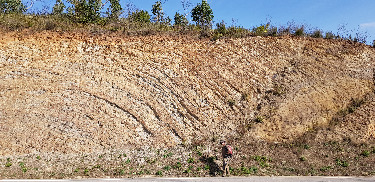
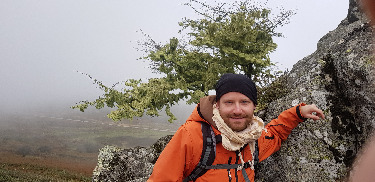
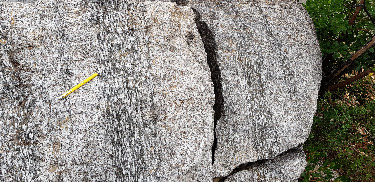
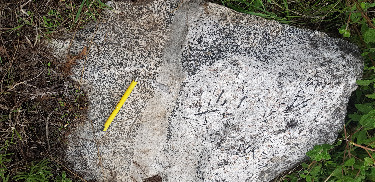
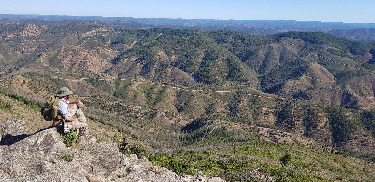
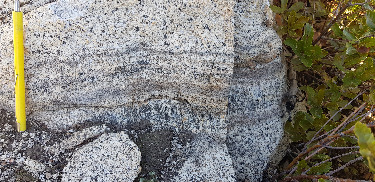
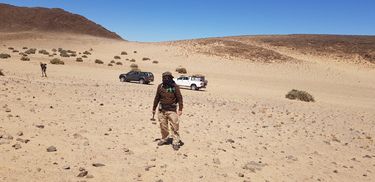
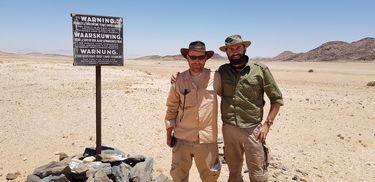
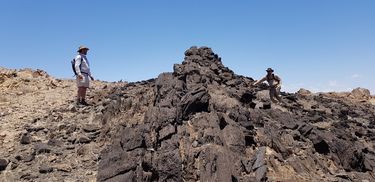
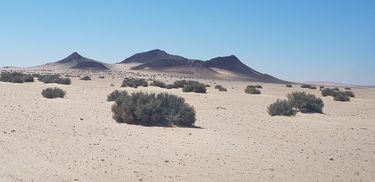
.jpg)
.jpg)
.jpg)
.jpg)
.jpg)
.jpg)
.jpg)
.jpg)
.jpg)
.jpg)
.jpg)
.jpg)
